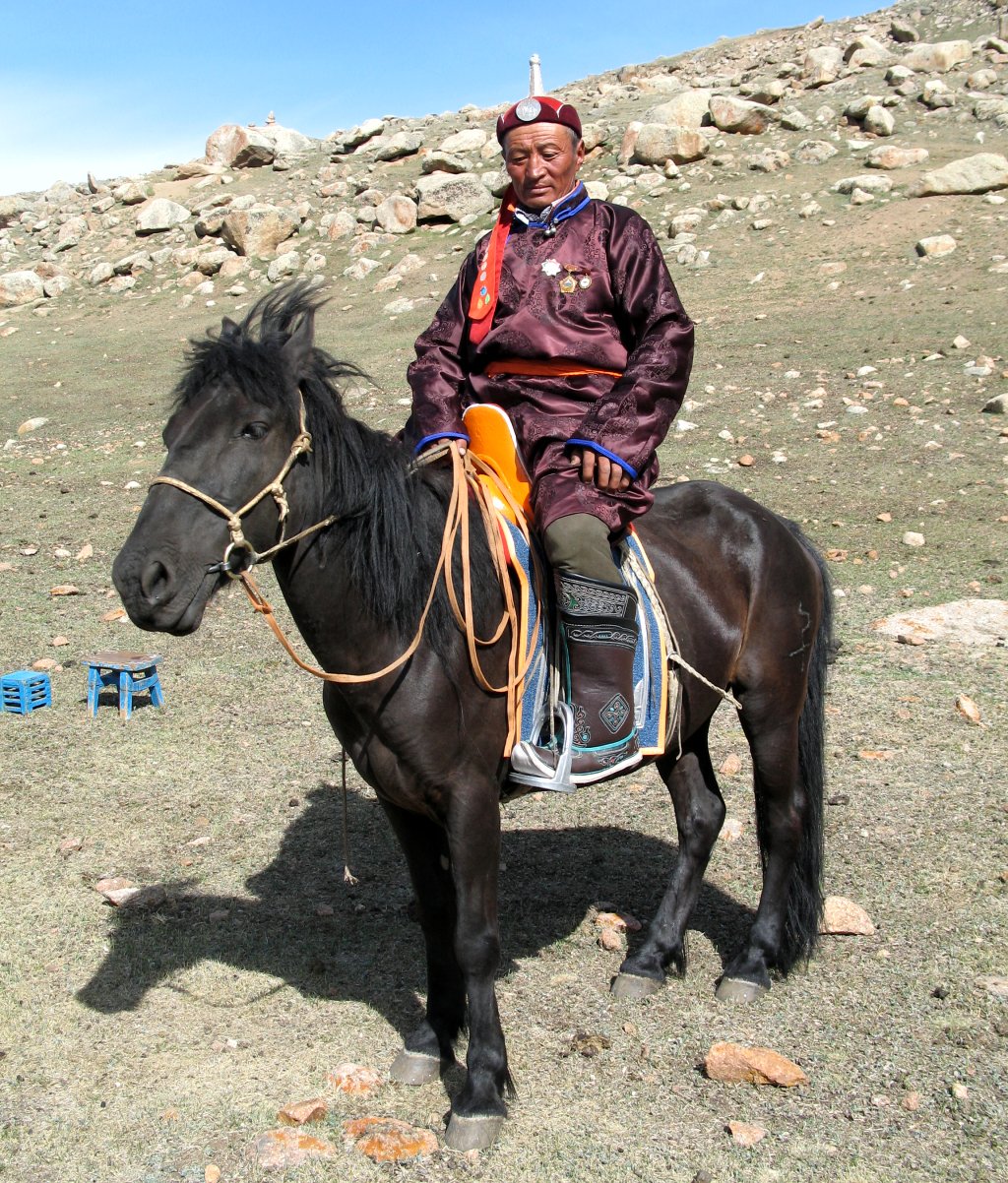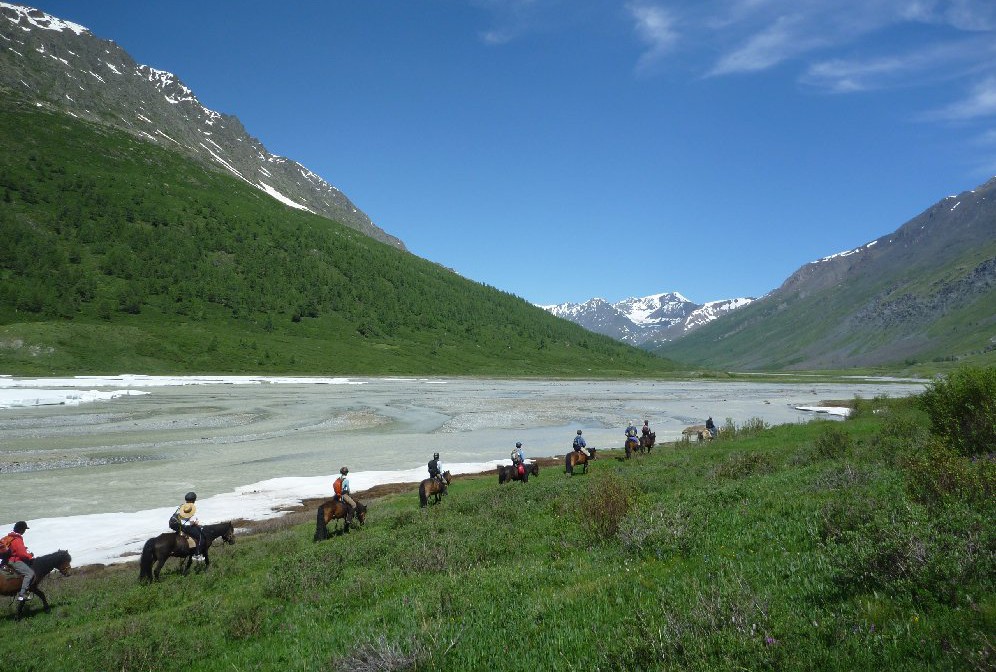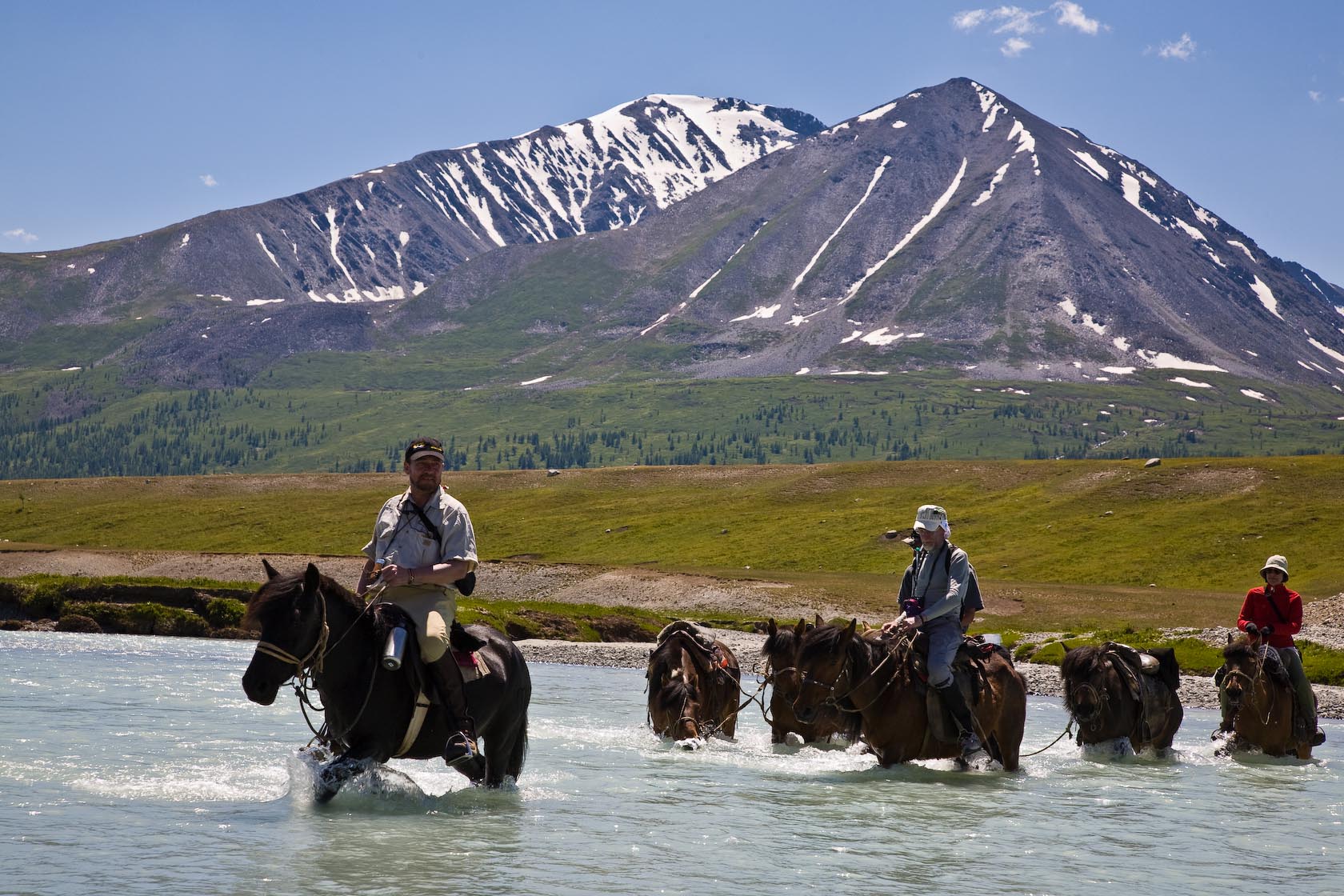Many places on earth have already been populated, polluted and otherwise transformed by the trappings of modern technology. Fortunately, Western Mongolia is one of those rare and wondrous places yet to be trampled over. This sprawling, remote and well-preserved region is teeming with stark and ancient beauty that instantly connects you to our planet’s vast history. Nature and culture coexist here, so it’s only fitting that the best way to truly encounter Western Mongolia is on the back of the hearty Mongolian horse – completely natural and native.
Riding Through History
Tusker Trail’s two-week Mongolia Trek is the ultimate Mongolia horseback riding vacation that takes you 1,000 miles across the country — and 1,000 years into its magical past. That’s how long the Mongolian Kazakh nomads have called this region home, hunting with golden eagles and traversing the lush terrain of the Altai Tavan Bogd National Park, where they still live and herd today. Riding from one camp to the next, you’ll immerse yourself in the horse-riding culture that has kept this land intact for so long. We’ll visit with locals in traditional tents called gers, attend their fascinating ceremonies and even experience the thrill of local horseback games.
If you’re interested in stepping even further back in time, you’ll love exploring the 10,000-year-old rock paintings and untouched, ancient landscapes that make this one of the planet’s best-preserved ecosystems. This vast, protected region is named for the Altai Mountains that stretch into Mongolia’s clear blue skies, right along the Chinese and Russian borders. You’ll experience mountainside valleys, lakes and rivers right alongside the endangered wildlife that live there. Deer, elk, snow leopards, bears, falcons, wolves and vultures are just some of the native species that you might spot during our trek.
Horseback Views of Paradise
It takes us a full day’s drive from the sleepy town of Bayan Ulgii to reach our first camp at Khoton Nuur. During our drive, we’ll leave behind most of Mongolia’s human population, trading the city’s markets and museums for gers and glacial depressions that you’ll never forget. After we reach our starting point, the rest of the journey is free of wheels and engines. Instead, we’ll navigate by foot and horseback, with camels carrying our gear, allowing us to immerse ourselves in the surrounding natural beauty.
We travel the Altai landscape in the company of local guides and animal handlers, all led by two of our highly experienced US based guides. By the time you cross the Tsagaan river on day 11, you’ll have formed a special bond with your horse and this incredible country.





